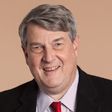High-Yield Bonds and Savings Ideas as The Fed Weighs a Rate Cut
Check out some of these investing ideas ahead of potential interest rate changes.


In my past few columns, I lauded bond ladders and high-yielding funds that own receivables such as bank loans and credit card obligations. With the Federal Reserve getting closer to easing credit as economic indicators cool down enough to disturb the stock market, it is ever wiser to guarantee potent income. Those effortless 5% cash returns will not vanish overnight. But by Thanksgiving, 4% is a realistic expectation for money market funds and Treasury bills.
For many of us, 4% is perfectly fine — especially if your personal inflation experience is diminished. That often varies with whether you rent or own and what you pay for car and property insurance.
But if 4% is inadequate, or you remain inclined to take risks, the combo of falling yields and retreating expectations for inflation in the bond market stands to reward higher-coupon and higher-dividend holdings. (Those market expectations for inflation run lower than what consumers refer to as the cost of living and so can accelerate a decline in interest rates.)
From just $107.88 $24.99 for Kiplinger Personal Finance
Become a smarter, better informed investor. Subscribe from just $107.88 $24.99, plus get up to 4 Special Issues

Sign up for Kiplinger’s Free Newsletters
Profit and prosper with the best of expert advice on investing, taxes, retirement, personal finance and more - straight to your e-mail.
Profit and prosper with the best of expert advice - straight to your e-mail.
Consider the week of July 29, when the Fed’s brass said it is about time to cut rates, and bad tech-company results then bludgeoned 1500 points off the Dow Jones industrial average and 1000 from the frothy Nasdaq composite.
But beneath the red on those indexes, the markets emphatically and unambiguously supported low-risk, high-dividend names such as AT&T, Realty Income, Verizon, and the regulated electric and water utilities. (High-growth, lower-dividend utilities and real estate investment trusts did take their lumps, though.)
Bonds’ big move. The bond market, meanwhile, rallied sharply. Among the gainers were our most esteemed actively managed bond funds, including Dodge & Cox Income (DODIX) and Fidelity Strategic Income (FADMX), which saw healthy upticks in net asset value atop their ongoing 4.7% and 5.3% distributions.
Readers can stand by these multisector bond funds, as well as high-yield and short-duration funds I’ve previously recommended, such as exchange-traded funds BlackRock Flexible Income (BINC, $53) and PGIM Short Duration High Yield (PSH, $50) and mutual fund RiverPark Short Term High Yield (RPHYX).
The Fed does not control the market rates that feed into their payouts the way it does with bank deposits and money funds, so the distributions, which currently run 5.7%, 9.1% and 5.4%, respectively, will not shrink much, if at all, in the near term. And easier credit terms stand to bolster the business prospects for the industrial and financial firms whose debts these funds hold.
Another extra-yield idea: The Federal Farm Credit Banks and the Federal Home Loan Banks are offering new bonds due in seven to 12 years with coupons of 5.7% to 6.0%. These government agency bonds are callable at par value six months after the date of issue, but that still means a premium yield for at least that long, as well as a chance to sell the bonds for a profit before the initial call date if these lenders’ rates on their next rounds of financing are 0.5 or 1 percentage point lower.
And as for cash: As I write this, you could still originate a two-year CD ladder with an average percentage yield of 4.7%, or a one-year version for 4.8%. These yields stand to be lower in a few weeks and certainly once the Fed’s first cut is official.
And if the next few monthly or quarterly jobs, retail sales, housing starts and other broad economic indicators soften, the central bank is unlikely to reduce short-term rates by more than 0.5 percentage point right away. The days of zero interest rates and “cash is trash” are not going to return, but neither will the appetite for higher yields be going away.
Note: This item first appeared in Kiplinger Personal Finance Magazine, a monthly, trustworthy source of advice and guidance. Subscribe to help you make more money and keep more of the money you make here.
Related Content
Profit and prosper with the best of Kiplinger's advice on investing, taxes, retirement, personal finance and much more. Delivered daily. Enter your email in the box and click Sign Me Up.

Kosnett is the editor of Kiplinger Investing for Income and writes the "Cash in Hand" column for Kiplinger Personal Finance. He is an income-investing expert who covers bonds, real estate investment trusts, oil and gas income deals, dividend stocks and anything else that pays interest and dividends. He joined Kiplinger in 1981 after six years in newspapers, including the Baltimore Sun. He is a 1976 journalism graduate from the Medill School at Northwestern University and completed an executive program at the Carnegie-Mellon University business school in 1978.
-
 Fed's Rate Cuts Could Have Impacts You Might Not Anticipate
Fed's Rate Cuts Could Have Impacts You Might Not AnticipateUnderstanding how lower interest rates could impact your wallet can help you determine the right financial moves to make.
-
 Past Performance Is Not Indicative of Your Adviser's Expertise
Past Performance Is Not Indicative of Your Adviser's ExpertiseMany people find a financial adviser by searching online or asking for referrals from friends or family. This can actually end up costing you big-time.
-
 I'm want to give my 3 grandkids $5K each for Christmas.
I'm want to give my 3 grandkids $5K each for Christmas.You're comfortably retired and want to give your grandkids a big Christmas check, but their parents are worried they might spend it all. We ask the pros for help.
-
 I'm a Financial Adviser: The Fed's Rate Cuts Could Have Impacts You Might Not Anticipate
I'm a Financial Adviser: The Fed's Rate Cuts Could Have Impacts You Might Not AnticipateUnderstanding how lower interest rates could impact your wallet can help you determine the right financial moves to make.
-
 Past Performance Is Not Indicative of Your Financial Adviser's Expertise
Past Performance Is Not Indicative of Your Financial Adviser's ExpertiseMany people find a financial adviser by searching online or asking for referrals from friends or family. This can actually end up costing you big-time.
-
 I'm a Financial Planner: If You're Not Doing Roth Conversions, You Need to Read This
I'm a Financial Planner: If You're Not Doing Roth Conversions, You Need to Read ThisRoth conversions and other Roth strategies can be complex, but don't dismiss these tax planning tools outright. They could really work for you and your heirs.
-
 Could Traditional Retirement Expectations Be Killing Us? A Retirement Psychologist Makes the Case
Could Traditional Retirement Expectations Be Killing Us? A Retirement Psychologist Makes the CaseA retirement psychologist makes the case: A fulfilling retirement begins with a blueprint for living, rather than simply the accumulation of a large nest egg.
-
 I'm a Financial Adviser: This Is How You Can Adapt to Social Security Uncertainty
I'm a Financial Adviser: This Is How You Can Adapt to Social Security UncertaintyRather than letting the unknowns make you anxious, focus on building a flexible income strategy that can adapt to possible future Social Security changes.
-
 My Teen Crashed His Car and Now Our Insurance Has Tripled. What Now?
My Teen Crashed His Car and Now Our Insurance Has Tripled. What Now?Dealing with the costly aftermath of a teen car accident is stressful. Here are your options for navigating it.
-
 My First $1 Million: Retired In-House Corporate Lawyer, 74, Midwest
My First $1 Million: Retired In-House Corporate Lawyer, 74, MidwestEver wonder how someone who's made a million dollars or more did it? Kiplinger's My First $1 Million series uncovers the answers.
-
 I'm a Financial Planner for Millionaires: Here's How to Give Your Kids Cash Gifts Without Triggering IRS Paperwork
I'm a Financial Planner for Millionaires: Here's How to Give Your Kids Cash Gifts Without Triggering IRS PaperworkMost people can gift large sums without paying tax or filing a return, especially by structuring gifts across two tax years or splitting gifts with a spouse.